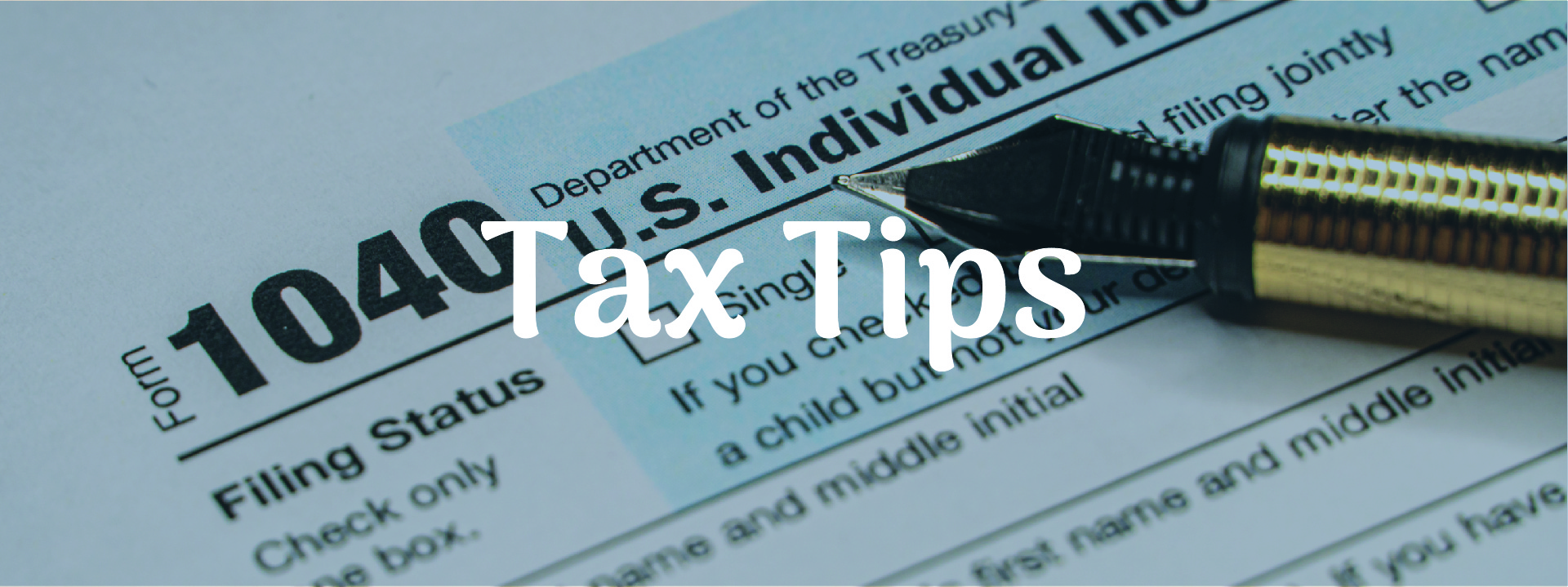2023 Year-End Tax Tips
Here are some things to consider as you weigh potential tax moves between now and the end of the year.
1. Defer income to next year
Consider opportunities to defer income to 2024, particularly if you think you may be in a lower tax bracket
then. For example, you may be able to defer a year-end bonus or delay the collection of business debts,
rents, and payments for services. Doing so may enable you to postpone payment of tax on the income until
next year.
2. Accelerate deductions
You might also look for opportunities to accelerate deductions into the current tax year. If you itemize
deductions, making payments for deductible expenses such as qualifying interest, state taxes, and medical
expenses before the end of the year (instead of paying them in early 2024) could make a difference on your
2023 return.
3. Make deductible charitable contributions
If you itemize deductions on your federal income tax return, you can generally deduct charitable
contributions, but the deduction is limited to 50% (currently increased to 60% for cash contributions to
public charities), 30%, or 20% of your adjusted gross income (AGI), depending on the type of property you
give and the type of organization to which you contribute. (Excess amounts can be carried over for up to
five years.)
4. Bump up withholding to cover a tax shortfall
If it looks as though you will owe federal income tax for the year, consider increasing your withholding on
Form W-4 for the remainder of the year to cover the shortfall. Time may be limited for employees to request
a Form W-4 change and for their employers to implement it in time for 2023. The biggest advantage in
doing so is that withholding is considered as having been paid evenly throughout the year instead of when
the dollars are actually taken from your paycheck. This strategy can be used to make up for low or missing
quarterly estimated tax payments.
5. Save more for retirement
Deductible contributions to a traditional IRA and pre-tax contributions to an employer-sponsored retirement
plan such as a 401(k) can reduce your 2023 taxable income. If you haven’t already contributed up to the
maximum amount allowed, consider doing so. For 2023, you can contribute up to $22,500 to a 401(k) plan
($30,000 if you’re age 50 or older) and up to $6,500 to traditional and Roth IRAs combined ($7,500 if you’re
age 50 or older).* The window to make 2023 contributions to an employer plan generally closes at the end
of the year, while you have until April 15, 2024, to make 2023 IRA contributions.
*Roth contributions are not deductible, but Roth qualified distributions are not taxable.
6. Take the required minimum distributions
If you are age 73 or older, you generally must take required minimum distributions (RMDs) from traditional
IRAs and employer-sponsored retirement plans (special rules apply if you’re still working and participating
in your employer’s retirement plan). You have to make the withdrawals by the date required — the end of the
year for most individuals. The penalty for failing to do so is substantial: 25% of any amount that you failed
to distribute as required (10% if corrected in a timely manner).
7. Weigh year-end investment moves
You shouldn’t let tax considerations drive your investment decisions. However, it’s worth considering the
tax implications of any year-end investment moves that you make. For example, if you have realized net
capital gains from selling securities at a profit, you might avoid being taxed on some or all of those gains by
selling losing positions. Any losses over and above the amount of your gains can be used to offset up to
$3,000 of ordinary income ($1,500 if your filing status is married filing separately) or carried forward to
reduce your taxes in future years.
This information was developed by Broadridge, an independent third party. It is general in nature, is not a
complete statement of all information necessary for making an investment decision, and is not a
recommendation or a solicitation to buy or sell any security. Investments and strategies mentioned may not
be suitable for all investors. Past performance may not be indicative of future results.
